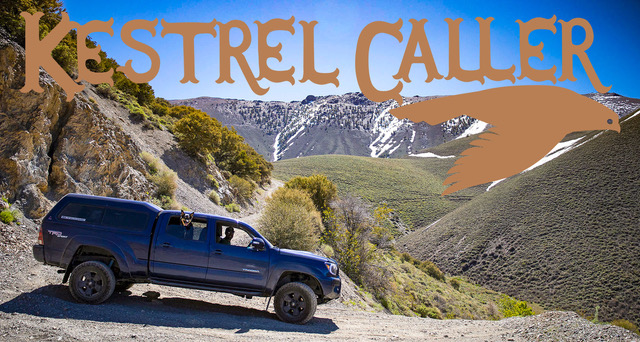Prefer to Hear this Story Instead? Listen Here.
So aliens are real, huh? Maybe the most conspiracy-fueled location on Planet Earth, this off-limits swath of land that encircles just about all of south central Nevada has held the imaginations of Nevadans, Americans, and Bob Lazar-believers around the world for decades. So, what’s really out there?
Few places in Sagebrush State (or universe) enchants more than the Nevada Test Site and the one-and-only Area 51. Swallowing up the majority of south central Nevada, the Nevada Test Site is located a quick 65 miles north of Las Vegas (so about an hour, time wise), encircling 1,573 miles of classic basin and range topography. Well-traveled Nevada explorers know what lies over this mysterious invisible border ranges from ancient cultural sites, to pioneer histories, thousands of different plants and animals, the Timber Mountain Caldera, and much more. But to the U.S. Government, it’s a big ol’ big empty, and an ideal location to detonate hundreds of nuclear bombs in the spirit of national security. It’s a sexy thread of Nevada history and to me, no flashier qualifier for Legends of Lost Nevada.
So, What is the Nevada Test Site, Anyway?
Back in the early 1950s and just a few years into the Cold War, the race between the United States and the USSR was on to develop better and more powerful nuclear weapons. The world’s first site of nuclear explosives testing was of course Bikini Atoll—a remote part of the Pacific Ocean that, fun fact, inspired the name of our fave swimwear—which lasted from 1946 to 1958. After a few dozen tests, the US Military quickly realized America needed its own remote testing location that was far away from most people but more accessible than a remote section of ocean near Guam, where nuclear testing could be conducted under controlled conditions. So, beginning in 1950, when the Las Vegas Strip wasn’t really even a thing yet, the Nevada Test Site was established with more and more acreage being added in the immediate years to come. By January of 1951, the first above ground nuclear bomb was dropped, kickstarting what would be 928 nuclear tests across the span of forty years.
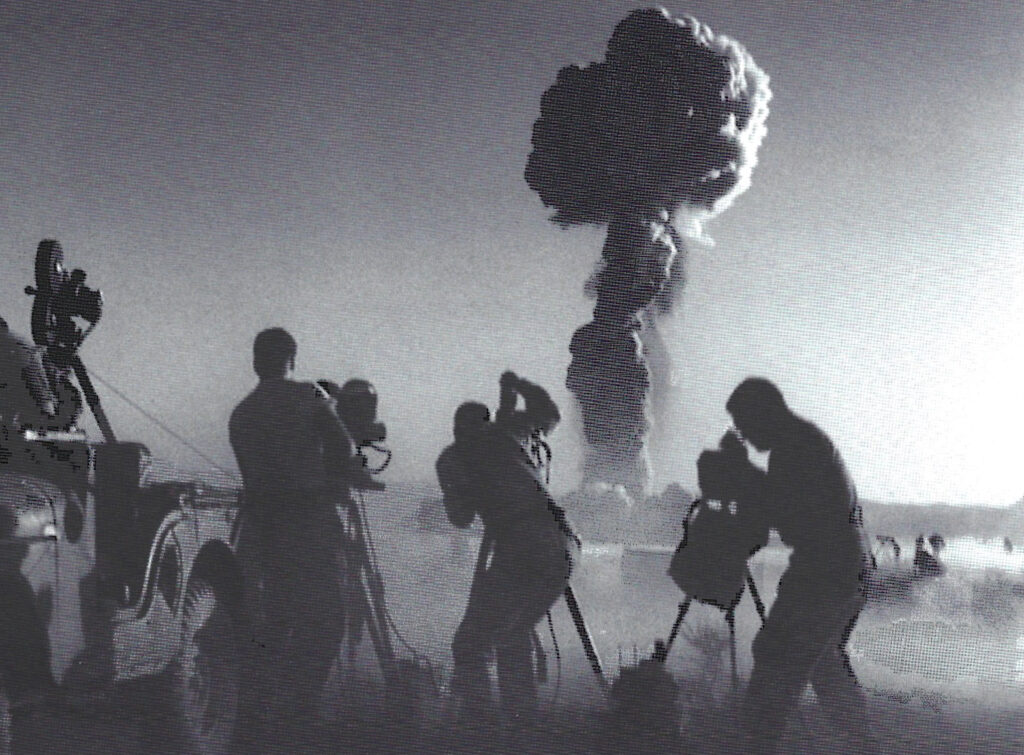
Back then Las Vegas only had a population of around 25k people (compared to its 2.2 million today), so traveling an hour north of town to work the Nevada Test Site was out of the question for the military. So they built a company town called Base Camp Mercury that, as nuclear testing gained more momentum, swelled to a population of 10k. The town of Mercury, NV had everything your average American town would, including a school, movie theater, bowling alley, swimming pool, hobby center, recreation center, hospital, library, and even a motel. You can still see the old town of Mercury from Nevada’s Highway 95. As for the Test Site itself? In true Nevada fashion, it’s tucked safely out of view, up and over a two lane highway pass and into the next valley—Frenchman Flat.
“Secrecy is the Word to Remember”
The Nevada Test Site land was divided and numbered in order to keep track of various tests at different locations to test the impact of nuclear weaponry and looming fallout. Nuclear tests were dropped from airplanes, detonated near the ground level, fired from steel towers, suspended from balloons, and shot from cannons. Some of the most famous Nevada Test Site bombs deployed at Frenchman Flat, where they basically built a variety of typical American infrastructure to see how it could withstand a nuclear bomb–so railroad lines, bank vaults, parking garages, and buildings made from different materials like wood, concrete, and steel.
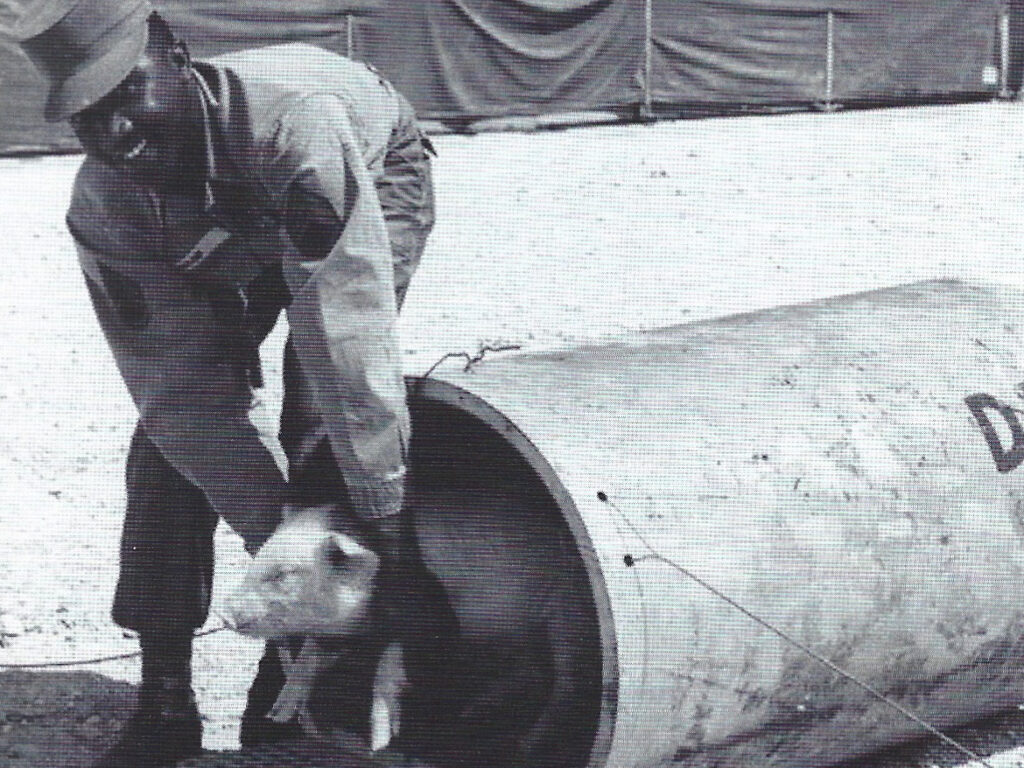
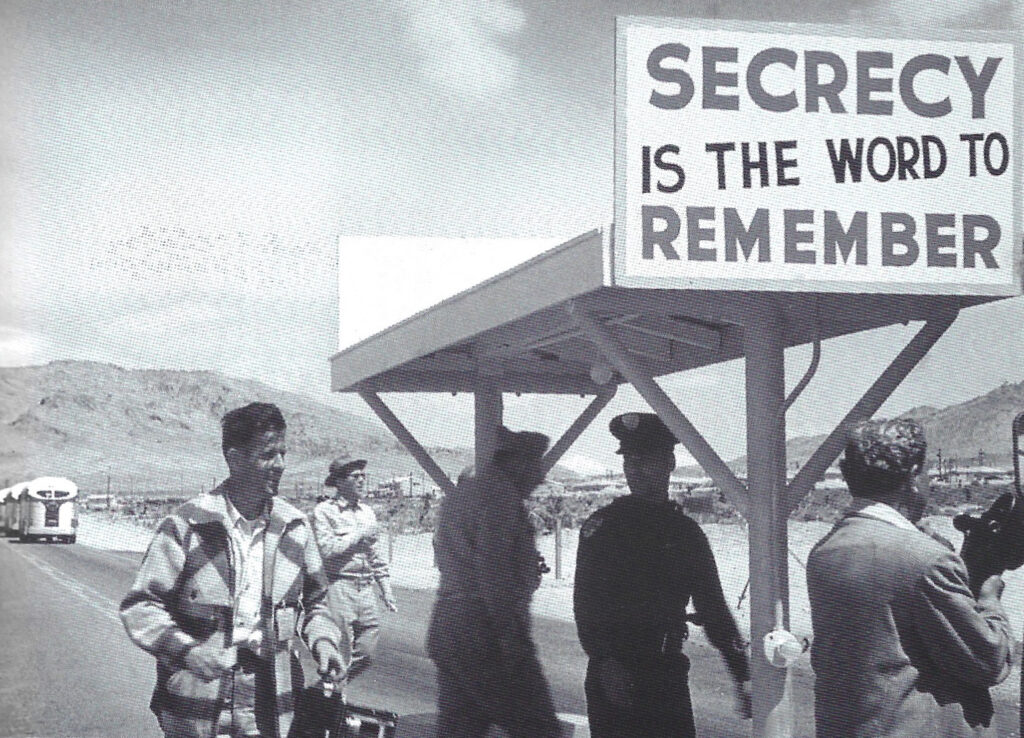
That, and 1,200 pigs were bred specifically for testing the medical effects of radiation—where they would stuff pigs dressed in US army uniforms in cages near atomic blasts. This definitely seems wild, especially by today’s standards, but remember this was during an era where we were obsessed with conquering new frontiers ranging from atomic weaponry to space discovery, where we also strapped dogs and chimpanzees to outer space-bound rockets to better understand those then-unexplored arenas.

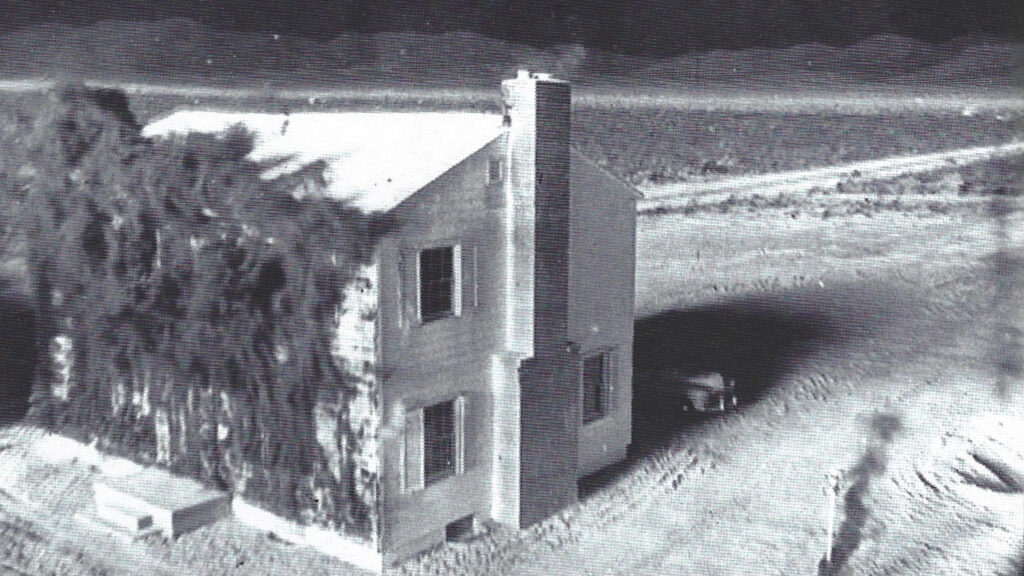
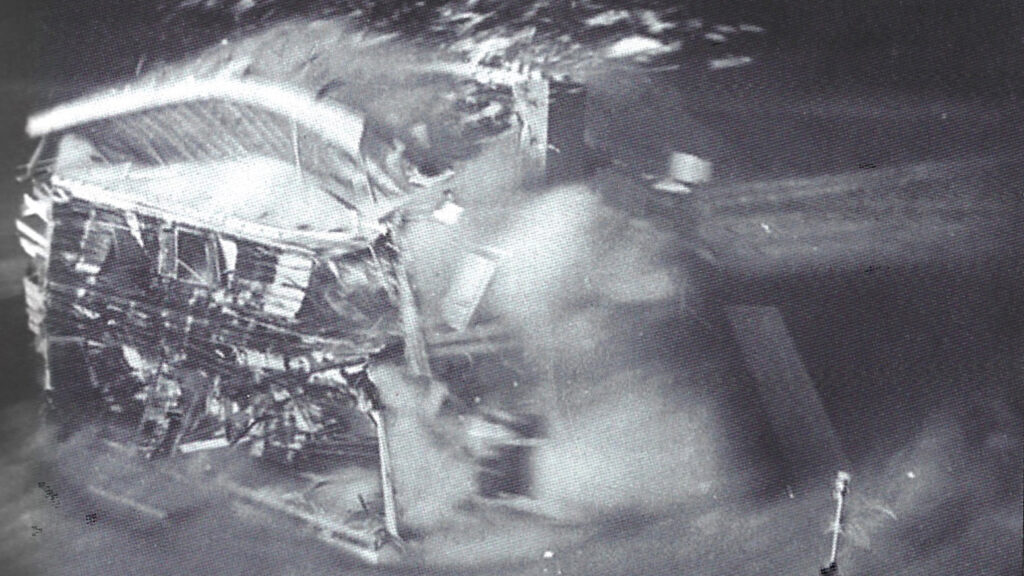
Another infamous part of the Nevada Test Site was near Yucca Flat, where the Apple II houses were built to see how a nuclear blast would affect your average American home. Just like Frenchman Flat, a series of homes made of different building materials were constructed, then stocked with mannequins outfitted in JC Penney clothing, with food in the pantry, cars parked in the driveway—the whole deal. None of it survived an atomic blast, not even the mannequins posed in the fallout-shelter-style basements.
Blasting into Atomic Tourism
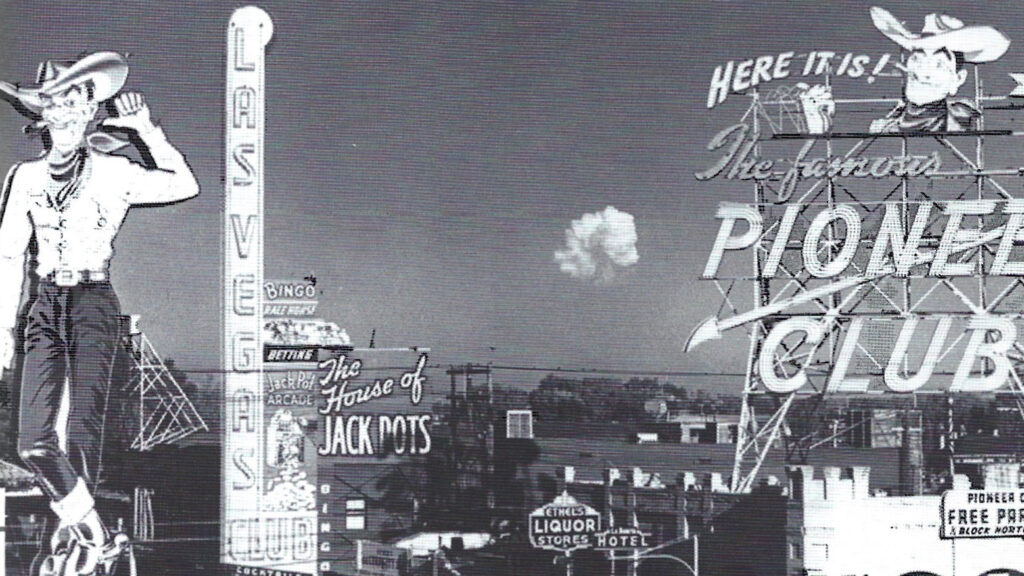
In a state that’s basically always had a tourism identity crisis, the Las Vegas Chamber of Commerce saw the opportunity before them (obviously without having access to the military’s Top Secret sinister conclusions of radiation exposure) and began marketing atomic tourism in an attempt to reinvent itself.
During the 1950s, they began printing calendars featuring exciting atomic blasts only an hour from Fremont Street including photos of tourists gazing at distant mushroom clouds poolside from Downtown Las Vegas.
Soon, the iconic Miss Atomic Bomb beauty pageant went down, along with a schedule of detonation times and viewing locations including the one and only Atomic Liquors—Las Vegas’ oldest free standing bar that earned its claim to fame by inviting thirsty tourists to view atomic bomb testing from their roof.
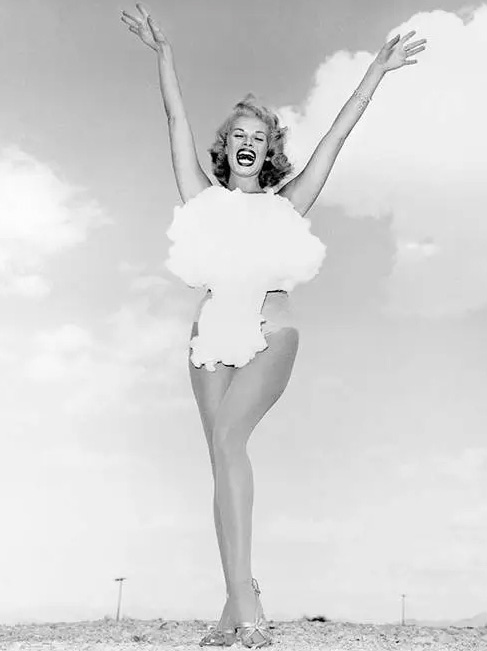
Becoming the Conspiracy HQ of the Universe
Atomic testing had a chokehold on American pop culture for at least a decade—see it on full display at the Las Vegas Atomic Testing Museum which details several groups of Apollo astronauts that trained here, and the story of Ken Case, the Atomic Cowboy, who managed hundreds of herds of cattle grazing the test site (that were later consumed by Americans.) Back in college while I was earning my photography degree, I remember one particularly grim lesson about the Kodak Factory, located across the country in Rochester, NY, who were having an issue with the development of their film. Kodak began to realize that the days they were experiencing issues were the same days atomic blasts were being detonated in Nevada, with enough radiation traveling all the way across the country—a stunning 2,300 miles away—to disrupt their film processing procedures. They made a deal with the government to keep it quiet and work around each other’s schedules, and well, the rest is history.
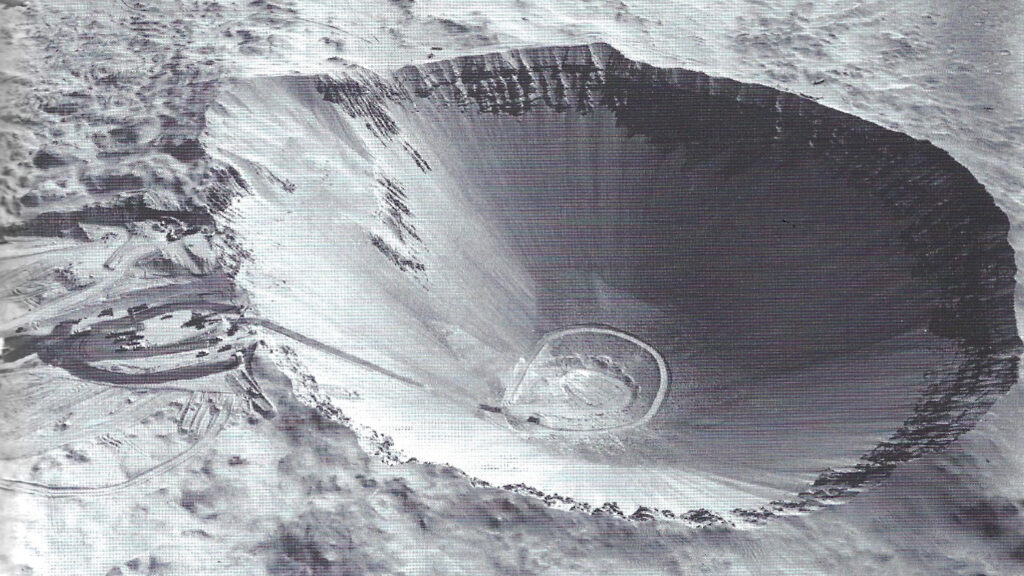
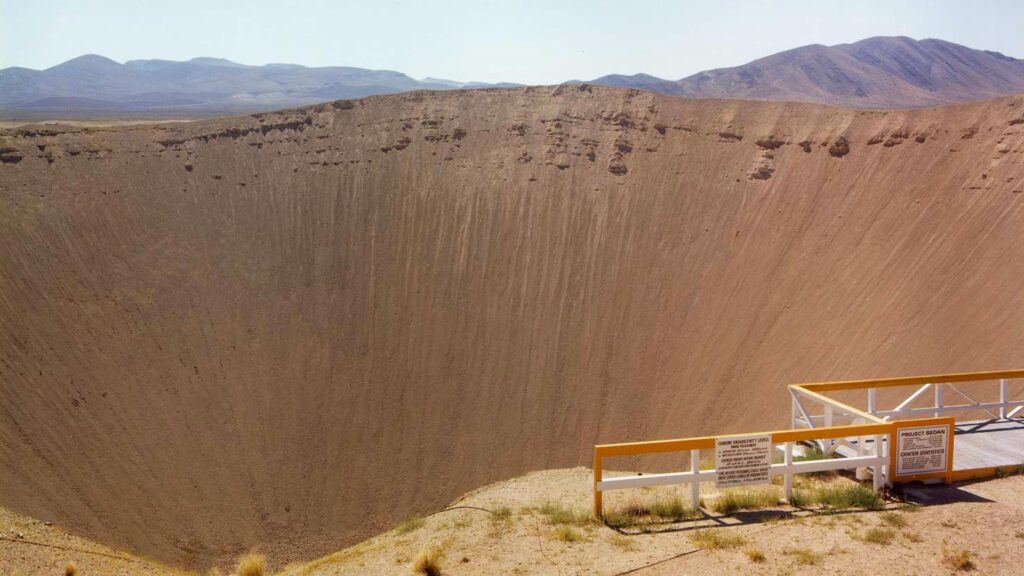
By the early 1960s, the Nevada Test Site’s nuclear testing shifted from above ground to underground testing, which lasted for about 30 years until Bill Clinton signed the Comprehensive Nuclear Test Ban Treaty in 1996, prohibiting further nuclear weapons testing. Today, the Nevada Test Site, now renamed the Nevada National Security Site, remains open and devoted to protecting national security in many ways, including large scale open air experiments with hazardous and toxic chemicals for emergency response training and techniques, where they welcome EMS and other city management teams from all over the nation to run emergency radiation exposure drills.
Area 51
From the Apple II houses, to Frenchman Flat, and Sedan Crater—the largest man-made crater in the United States—there are all kinds of famous features most people won’t see inside the Nevada Test site. Even if you can score a highly coveted tour which is released only a couple times a year, and when I went, required multiple background checks and a two-to-one escort who requested I delete some of the photos I shot, there’s one place out there you won’t see: Area 51.
Part of that numbered grid system I was explaining before—like Area 22 or Area 37, for example—Area 51 simply began as another sectioned plot of land set aside for specific testing, but is located the furthest possible place away from the town of Mercury and in the most remote, top secret section of the Nevada Test Site propelling enough conspiracy theories to far outlast any atomic blasts. By the late 1960s, the U.S. Military began using Area 51 to test the limits of enemy aircraft, and by the mid 1970s, they started to test the limits of stealth technology aircraft (or undetected planes.) By the mid 1980s, they began running stealth missile tests, experimented with the limits of the F-117 Nighthawk Stealth, and tested the Aurora, a replacement aircraft for the SR71 spy plane. And even with the utmost slyness even running experiments at night, it was possible for the average ET Highway road tripper to see these planes in test mode, not realizing what was in front of them was an unreleased American military initiative not yet announced to the general public, fueling some of the world’s most lasting conspiracy theories.
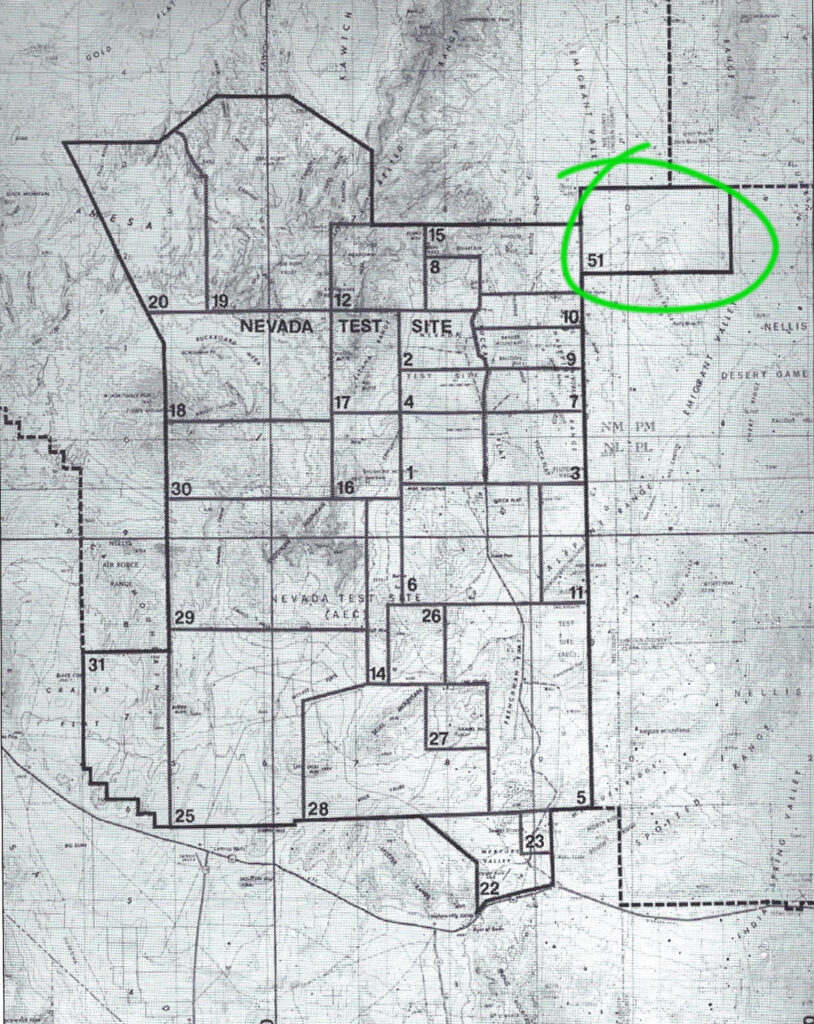
Are Aliens Real? The u.s. government sure says so
The Et Highway & Black Mailbox
In the years since, in another attempt to drum up new tourists to an otherwise absolutely bleak, off-limits type of terrain, the Nevada Division of Tourism named the desolate stretch of highway bordering Area 51 the Extraterrestrial Highway, inviting people to explore this misunderstood section of Nevada with one step in the wrong direction promising detention in the nearest prison as the fine print. A bunch of other businesses sprang up in the wake of its success (well that, and the release of the movie Independence Day), like the Alien Research Center and E.T. Fresh Jerky (both in Alamo, NV), to name a few.
Out beyond Steve Medlin’s Paradise Ranch and his world-famous Black Mailbox, Google Earth will show that Area 51 is just a collection of buildings, yet some people will insist it’s only the tippy-top of a massive underground network that contains bizarre aircraft, captured aliens, and UFOs. Bob Lazar, a former employee of Area 51, insists on another completely different narrative about flying saucers, with claims of having studied alien technology in possession of the U.S. Government back in the 80s.
The Pentagon confirmed a UFO program a few years back, and as recent as the summer of 2023, the U.S. Government finally came out with the admission we’d all been waiting for: aliens are all the way real. That, and in 2022, a nearby land art installation that looks straight outta another planet came on the scene—Michael Heizer’s City, which is basically directly north of Area 51 in Nevada’s Garden Valley and fit for the Sci-Fi fantasy of your dreams.
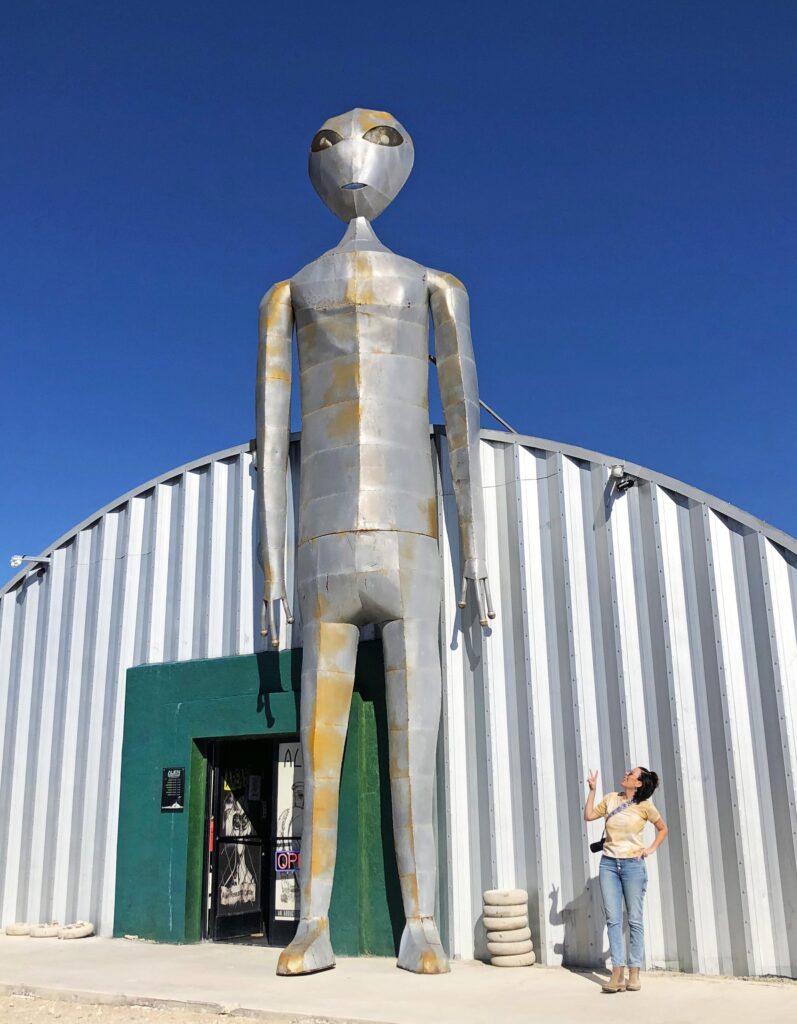
But am I a believer? With thousands of miles of dirt roads under the tires and just as many hours logged staring into the great unknown, I still haven’t figured that out yet. Do I have a framed Bob Lazar-autographed poster hanging in my house? Absolutely yes.










